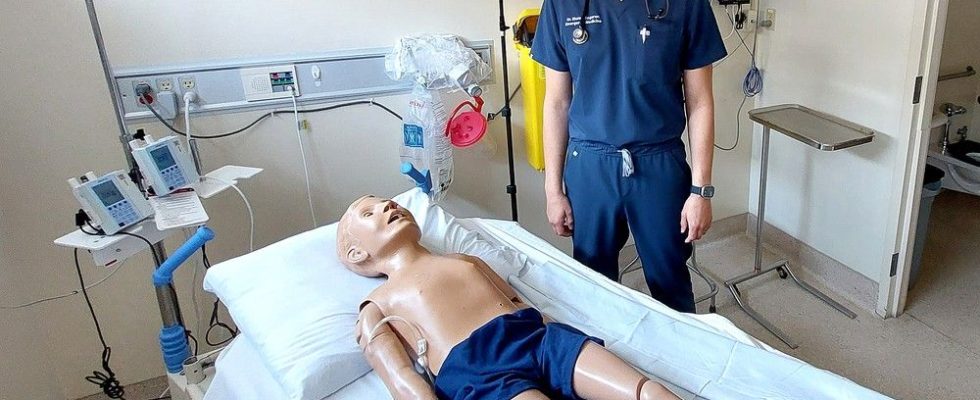The onset of the COVID-19 pandemic, and the acute symptoms it caused in patients, changed the emergency room environment.

The onset of the COVID-19 pandemic, and the acute symptoms it caused in patients, changed the emergency room environment.
In response to this, Shawn Segeren, an emergency room doctor at Chatham-Kent Health Alliance, began a simulation training session for local physicians in April 2020.
Segeren, 33, founded Dynamic Simulation, a clinical simulation program that he brings to hospitals. It offers hands-on practice in procedures such as intubation, placing central lines and inserting chest tubes using mannequins.
“I realized there was a big gap in simulation training and hands-on training in rural (and) regional communities,” Segeren said.
He added, “It was probably a year into it when I started getting more interest from other hospitals.”
Several sessions are planned at CKHA over the next few years and he has done training simulations at hospitals in Pembroke, Ingersoll, Newbury and Huntsville.
The training has expanded to include nurses and respiratory therapists.
“After those sessions, the feedback was ‘Wow, this is really good. You’ve hit some kind of deficit that we have in our emergency department’s education,’” he said.
“There is great value in having access to training like this,” Dr. Tom Hurley, chief of staff at Pembroke Regional Hospital, said my email.
While he didn’t participate directly in Segeren’s session, delivered at the height of the pandemic, “It was viewed as important enough to continue similar training on our own,” he said.
The Pembroke hospital has since teamed with Ottawa’s Children’s Hospital of Eastern Ontario to offer similar training for pediatric staff, he added.
Segeren said his training focuses on high-acuity, low-incidence events, or emergencies only seen once in a while. Since time matters, he added, “Knowing how to do something quickly and efficiently could save somebody’s life.”
One simulation involves a patient badly burned in a house fire, who arrives at the ER with a significant amount of soot in their mouth.
In this case, Segeren said, an “awake intubation” is performed, which means trying to keep the patient awake while an endotracheal tube is put down their throat.
If a typical intubation technique were performed, it could threaten the patient’s life, he said.
Though an awake intubation is a rarely used skill, Segeren said he’s had feedback from doctors who went on to use it in cases they might not have otherwise.
“Being able to have the ability, skill and previous hands-on knowledge made a big difference in those cases,” he said.
Trainees have included doctors, nurses and respiratory therapists with a wide range of experience, Segeren said, adding simulations are a great way for less-experienced staff to develop their skills while longer-serving staff refresh theirs.
“There’s been buy-in from both of those sides, which is nice,” he said.
The young doctor went from renting simulation mannequins from CKHA to buying new ones as he prepares for Dynamic Simulation to grow. He’s been doing all the training himself, but looks forward to bringing on a Hamilton-area doctor to lead some sessions.
“My goal is to continue expanding into Ontario,” Segeren said, becoming a program that physicians, nurses and RTs look to bring to their hospitals to help improve how patients are cared for and their departments are run.
“I’d like it to be a program that’s well-known throughout the province for hands-on (training) that comes to you,” he said.

Comments
Postmedia is committed to maintaining a lively but civil forum for discussion and encourages all readers to share their views on our articles. Comments may take up to an hour for moderation before appearing on the site. We ask you to keep your comments relevant and respectful. We have enabled email notifications—you will now receive an email if you receive a reply to your comment, there is an update to a comment thread you follow or if a user you follow comments. Visit our Community Guidelines for more information and details on how to adjust your email settings.
Join the Conversation